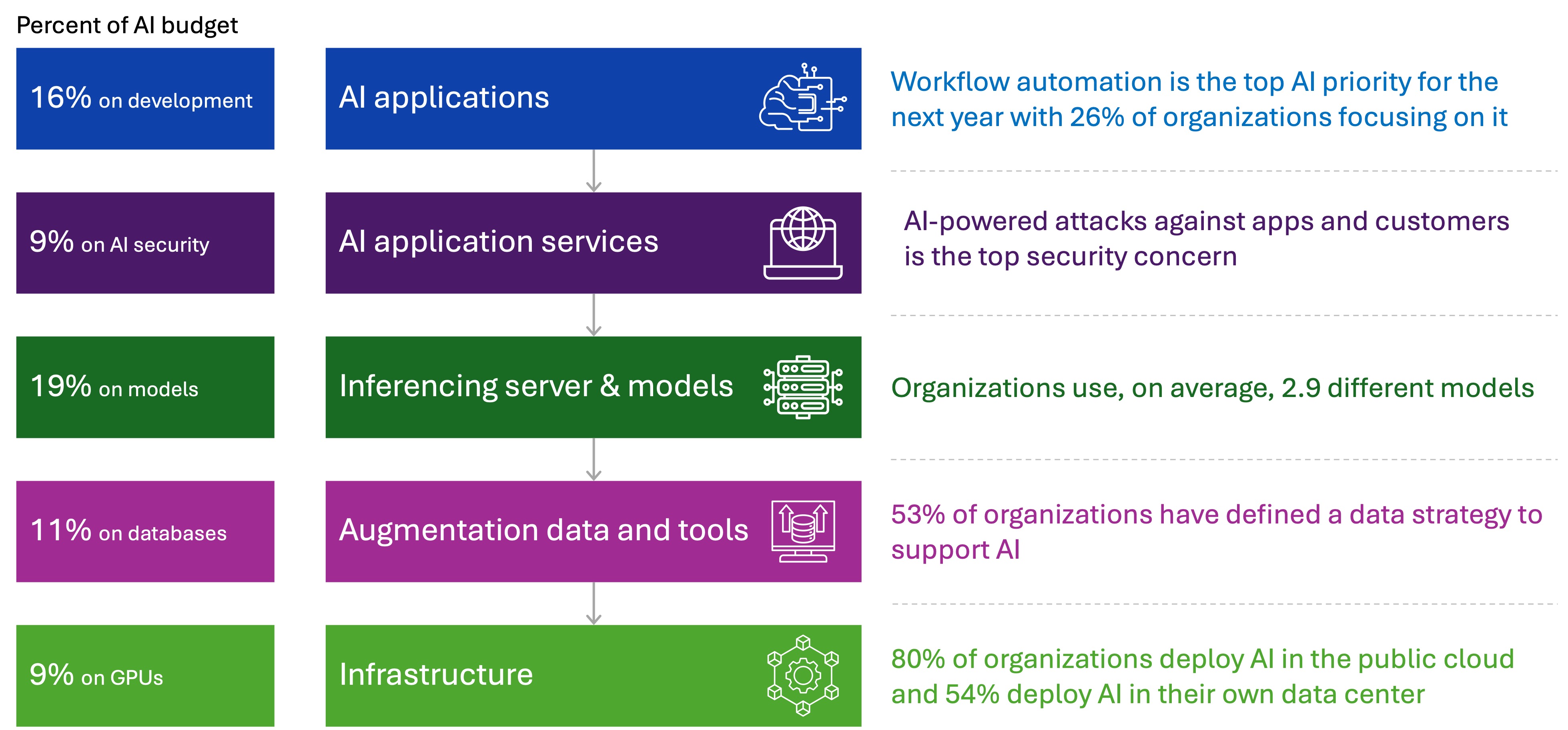State of AI Application Strategy: Digital Maturity or Madness
Might be AI leads to a little of both.
New research on AI lands in my inbox every day. When it isn’t a technical paper on some new technique on improving performance or a new architecture it’s a survey of perceptions and plans with respect to AI in consumer and corporate life.
We dove into AI adoption, too. After getting a taste of what’s coming in our annual research we did a deep dive to really understand how organizations are currently—and plan to—harnessing the power of AI.
We were not disappointed with the results. But neither were we really surprised. We have the benefit of our own research and, as mentioned, an inbox full of stats and insights from across the industry.
But what we did find were some details that tell a much more robust story about enterprise AI adoption in the world today. It isn’t all OpenAI out there, and neither is it all about productivity. In fact, when you look at the state of AI from the perspective of its emerging stack, you can clearly see that organizations are frenetically executing on a wide variety of initiatives that, for the most part, support future AI uses more than they deliver on its value today.

For example, productivity use cases—the copilots and chatbots that seem to be everywhere and in everything—are widely implemented already. Nearly half (40%) of organizations have adopted AI employee productivity tools and just over one-third (36%) have deployed those chatbots you either love or loathe, and sometimes both at the same time.
But those details are not all that interesting. What is interesting is exactly which models organizations are adopting and, it turns out, why.
Because businesses aren’t standardizing on a single model. On average, they’re using 2.9 models, and the specific details on which ones they use vary by use case. We’re seeing healthy adoption of open source and proprietary models across every industry. Names like Llama and Mistral are becoming as common to hear as ChatGPT and Hugging Face.
Which foretells even greater variety next year when organizations execute on their top AI priority, workflow automation. Because that use case isn’t a great fit for AI as a service, given its need to be embedded in an organization’s workflows. Which is a technical term for business and operational processes, which have largely been the basis for a company’s competitive advantage since the early days of computing.
More interesting from a practitioner or IT leader’s perspective is the technology stack and how it’s forming up. We know AI applications are modern applications that increase the number of APIs in play, but what’s the stack look like, and where is that stack being deployed? You might notice that we include AI application services in our view of the AI technology stack. That’s because the concerns around security and scale are going to reinforce the already important role that application services play in delivering and securing applications of all kinds.
Concerns abound regarding defenses against AI-powered attacks on APIs and applications, about protecting the privacy of customers and corporate citizens, as well as keeping company secrets, well, secret. That’s why there’s no question in our minds that application services—both existing like DDoS protection and API security, load balancing, and ingress control, as well as those emerging, like AI gateways—are going to be critical and integral components of the AI technology stack.
Organizations plan to spend 9% of their AI budget on these services, in addition to all the other spending they’re going to be doing to build out their AI technology stack.
And build it out they are, with more than half (54%) of organizations planning to deploy AI models and AI applications on premises.
Now, with all that said, there’s a lot of details about the state of AI I’m not sharing because, well, we already wrote an entire report about the details that you can get right now, right here.
So dig in, and see why we’re convinced that the road to AI either leads to digital madness or digital maturity.
